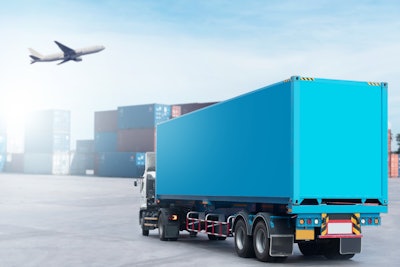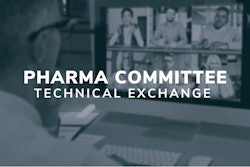
Real-time monitoring for pharmaceuticals and biologic products in the temperature-controlled supply chain presents several significant challenges to manufacturers along with its benefits. Limitations of battery life and communication disruptions during international shipments are just the beginning. Who owns the data, and how can data loggers be more sustainable?
During a breakout discussion at the 2023 ISTA European Packaging Symposium in Amsterdam, the Netherlands, held September 27-28, suppliers and manufacturers gathered for a lively discussion about trends and ideas shaping the discussion on real-time monitoring in the supply chain.
1. Making devices compact
One of the key challenges faced by the industry is the battery life of real-time monitoring devices; long battery life is needed for international shipments. With the move away from bulky battery packs, the industry is progressing to more compact units, making them more practical for various applications. However, in some cases, the more compact size may impact battery life.
2. Determining precision
Participants noted that while GPS provides precise location data, it's not always necessary for all applications. For example, for some pharma-related data loggers, an accuracy of 10 to 20 or more meters is generally sufficient, while other manufacturers may need more precision. The level of precision factors into cost, battery life, among others.
3. Mobile IoT and geofencing
To some, the term “real-time monitoring” is a misnomer because it is hardly instantaneous. Devices often transmit data every two hours – not truly in real-time – to preserve battery life. Mobile IoT is emerging as a game-changer, with devices communicating at preset intervals to conserve battery life. However, for international shipments, there are still concerns about battery drain, especially when devices are out of range of communication infrastructure. Geofencing was also a hot topic: once the device enters a certain preset geographic boundary, it triggers a signal for data transmission of temperature data. Geofencing can also be used to send an alert if the shipment goes outside of defined parameters.
4. Extreme temperature monitoring
Most data loggers operate in conditions within the -32 to +55?C range. But manufacturers working with scenarios involving ultra-low temperatures, such as -82°C, may require special loggers. For extreme temperature monitoring, external probes can be used, offering flexibility for tracking both internal and external temperatures.
Related reading: 10 Temperature Monitor Qualification Considerations
5. Balancing cost and accuracy
One evergreen and significant concern is the cost of implementing real-time monitoring in cold chain shipment. Some participants said the tradeoff between accuracy and frequency of sending data and cost is a challenge for international shipments. For example, the cost of sending signals from a ship at sea may be prohibitive for many – as high as $80,000/month for some data transfers, said one attendee.
Manufacturers can consider also whether there are SOPs in place to act on real-time temperature excursions. For example, if there is no way for an employee to intervene and add dry ice to the shipper during transit when a high temperate alert is triggered, is it worth paying the high relative cost? (Attendees commented that they are interested in exploring the intersection of real-time monitoring and simulation or predictive analysis software.)
Participants said they will be closely monitoring the development of emerging satellite networks such as Elon Musk’s Starlink for future solutions.
6. Sustainability concerns
With the general move towards sustainability throughout the industry, we will most likely see a move away from single-use data loggers, which create electronic waste. Some suppliers offer multi-use loggers—considerations for end users here are returns logistics to retrieve the logger from its destination for reuse, and potential refurbishment needs.
7. Tracking the right data, safely
Standard real-time monitoring devices can track factors such as vibration, tilt, light, temperature, humidity, and pressure within a load. One supplier noted that many users don’t take full advantage of the range of features available on their loggers. For end users, it's important to consider the cost, complexity, and actual utility of logger features before incorporating them into monitoring devices. The group also discussed the challenge of data security, emphasizing the need for encrypted data transmission and secure data handling.
8. Who owns the data?
Relatedly, the issue of data ownership was a point of debate. In some European regions, the owner of the device also owns the data it generates, while in other places, data ownership is not as clear-cut. This has significant implications for data sharing and collaboration between stakeholders.
9. The digitalization trend
Digitalization trends also figured prominently in the discussion. For example, using real-time data to simulate temperature conditions during shipment helps predict issues before they occur. This technology could be particularly valuable in high-value shipments, allowing for proactive measures to be taken as products go on the pallet in the factory.
Related reading: Predictive Technology Is the Future of Cold Chain
Real-time monitoring for temperature-sensitive bio-products throughout the supply chain is evolving, with suppliers and manufacturers working hard to address ongoing challenges. Collaborative efforts and technological advancements, like those promoted at the ISTA European Packaging Symposium, will continue to shape the future of real-time monitoring in logistics.






















